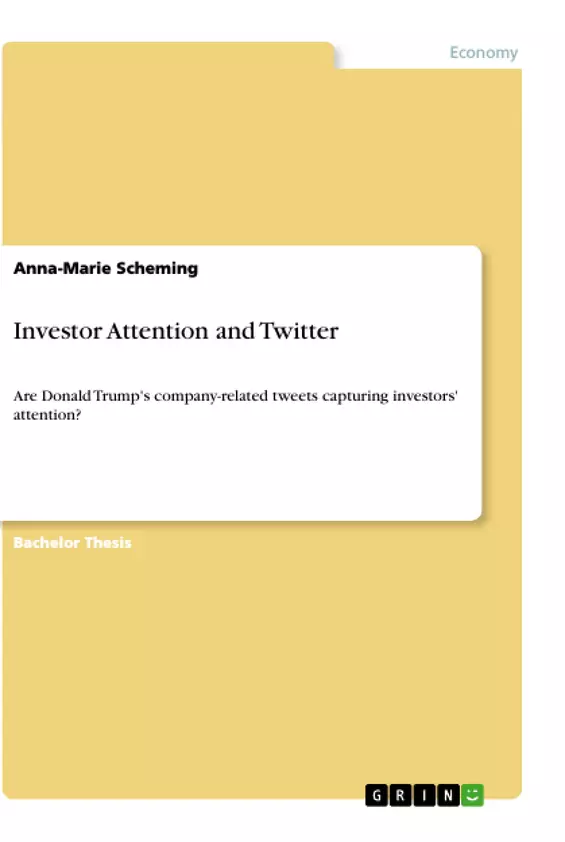This thesis focuses on the impact of Trump's company-related tweets on the attention of retail investors. In this context, the main research question is whether Trump's tweets clearly have a triggering effect on retail investors attention and whether this financial attention can be measured with the help of direct proxies.
This thesis is organized as follows. The first chapter deals with the underlying theory and findings from previous research. Here, the first part presents a precise and clear definition of the concept of financial attention. Thereby, it is relevant to distinguish that it only refers to financial attention and not to attention per se. In the second part of the first chapter, direct and indirect proxies are presented and critically examined. As the research question relates to measurements for direct proxies, various direct attention measures are presented and evaluated. In addition, previous work examines how direct proxies can be applied as a measure of IPO events. The second chapter deals with data collection and methodology. In this process, company-related tweets from Donald Trump's Twitter account are collected and classified into a positive or negative tone. After that the SVI for the affected companies is searched on Google Trends. Subsequently, using a regression analysis in excel, the empirical relationship is examined. After describing and highlighting the results, the conclusion critically discusses the findings and offers suggestions for future work.
Inhaltsverzeichnis (Table of Contents)
- Introduction
- Theory and literature review
- Financial attention
- Direct measurements of attention
- Yahoo Finance search
- Search Volume Index
- The Baidu- Index
- Empirical study
- Data and methodology
- Results
- Conclusion
Zielsetzung und Themenschwerpunkte (Objectives and Key Themes)
This study aims to investigate the relationship between financial attention and stock market returns. It examines how the attention of retail investors towards a company, as measured through online search data, affects its stock price performance.
- The impact of social media on financial markets
- The role of attention in investment decisions
- The use of online search data as a proxy for investor attention
- The relationship between investor attention and stock market returns
Zusammenfassung der Kapitel (Chapter Summaries)
The introduction sets the context by discussing the growing importance of social media as a source of information for investors. It highlights the limited nature of investor attention and its potential impact on market outcomes. The second chapter delves into the theoretical framework, reviewing relevant literature on financial attention and its measurement. It discusses various approaches, including the use of search data from platforms like Yahoo Finance and Baidu.
The third chapter outlines the empirical study design. It describes the data sources, methodology, and the variables used in the analysis. This chapter focuses on the empirical approach taken to investigate the relationship between attention and stock returns. The results of the empirical study are presented in this chapter, exploring the relationship between investor attention, as measured through online search data, and stock market returns.
Schlüsselwörter (Keywords)
This study explores the concept of financial attention, examining how it influences stock market returns. It leverages online search data as a proxy for investor attention and uses empirical analysis to study the relationship between attention and stock prices. Key themes include social media, investor behavior, financial markets, and data analytics.
- Quote paper
- Anna-Marie Scheming (Author), 2021, Investor Attention and Twitter, Munich, GRIN Verlag, https://www.grin.com/document/1215873



